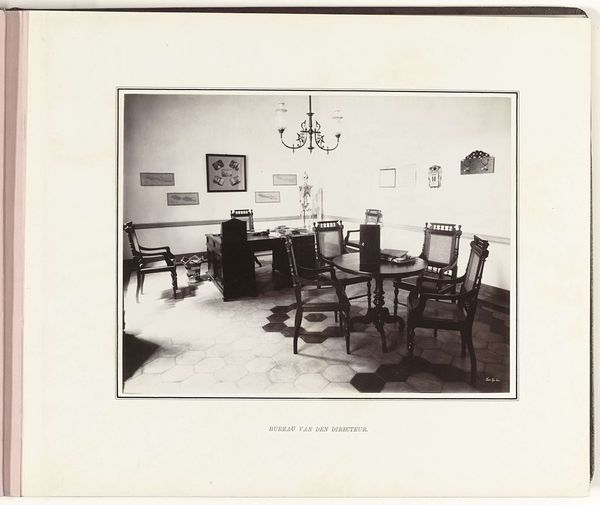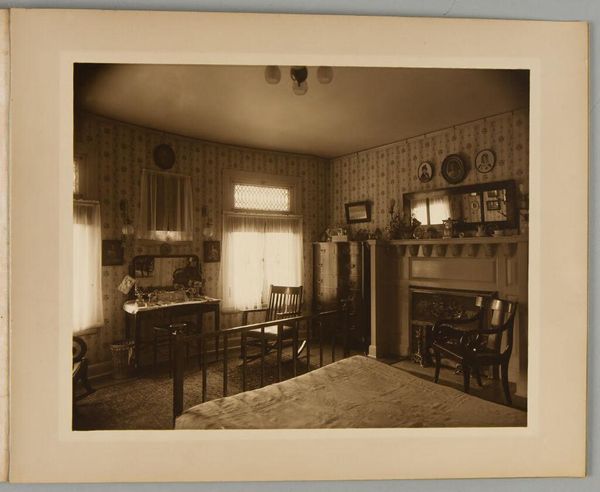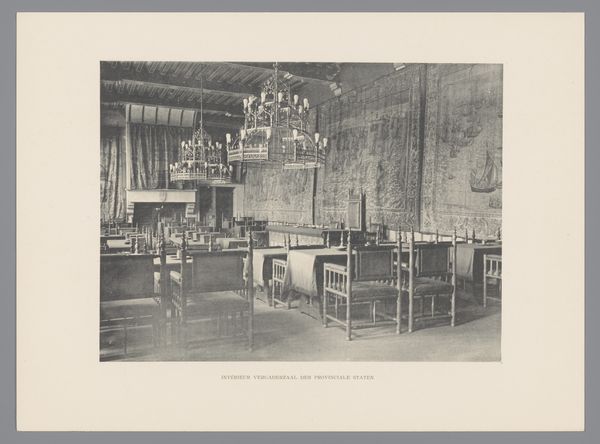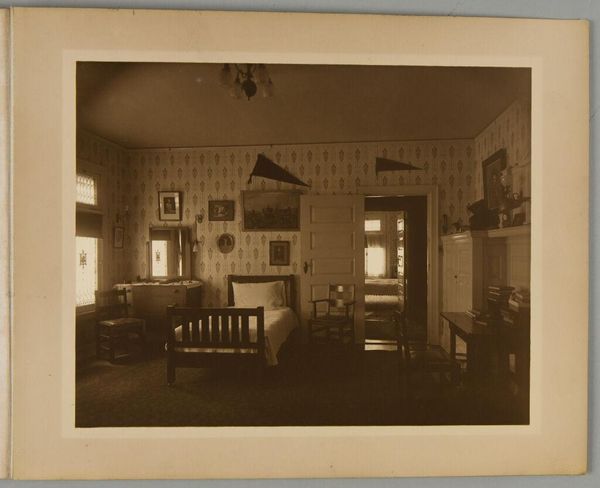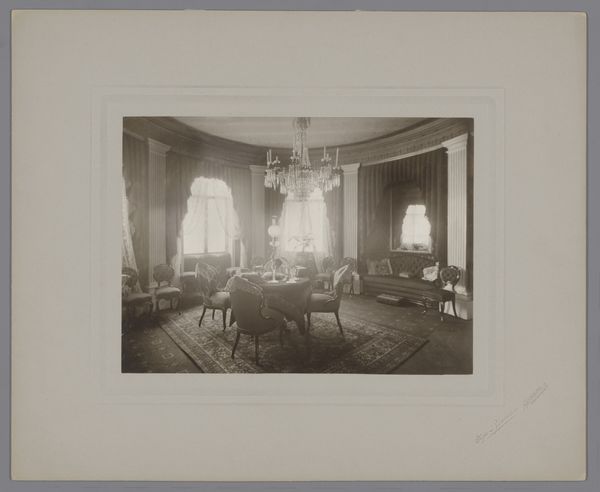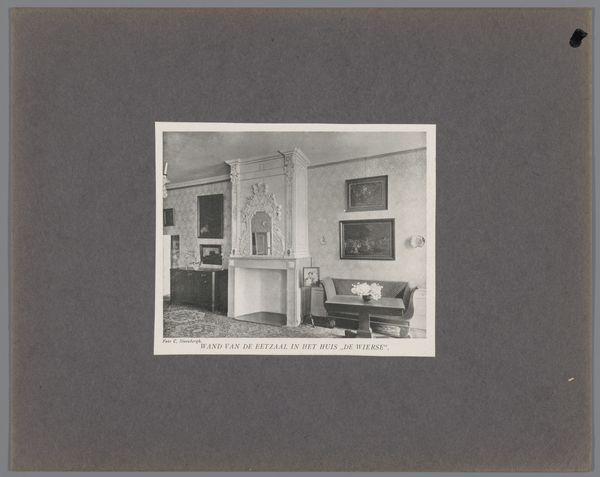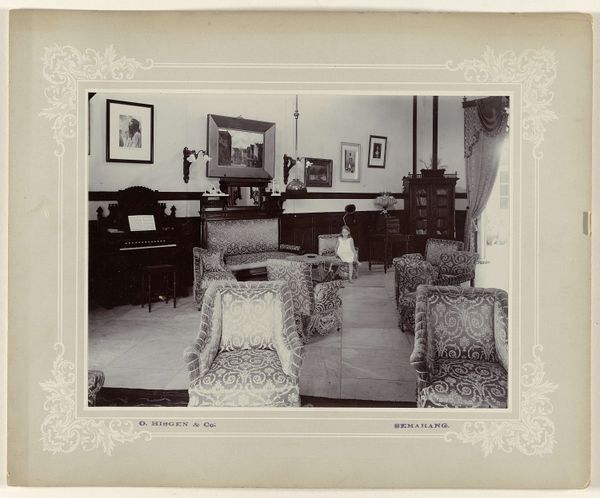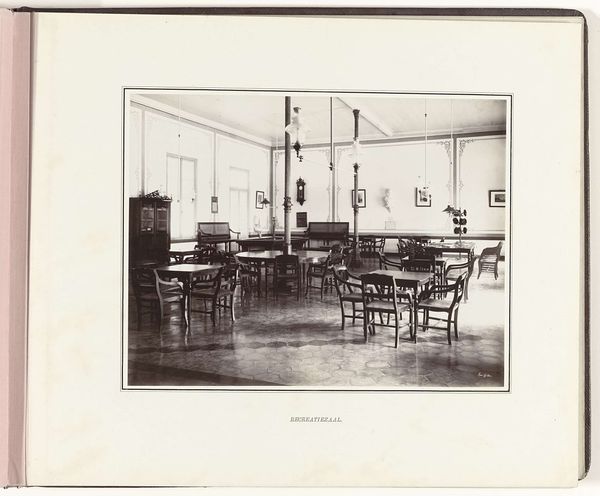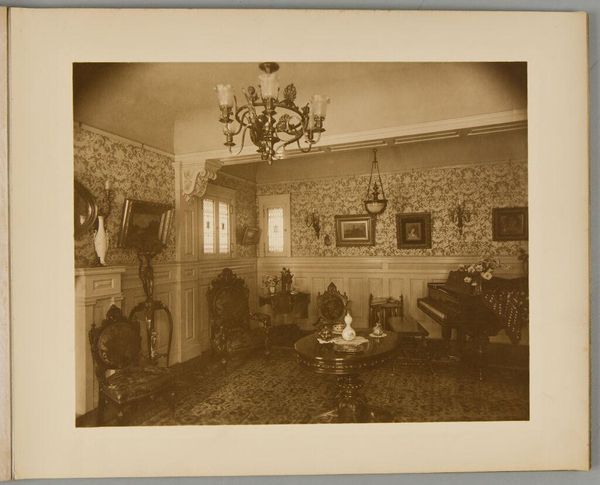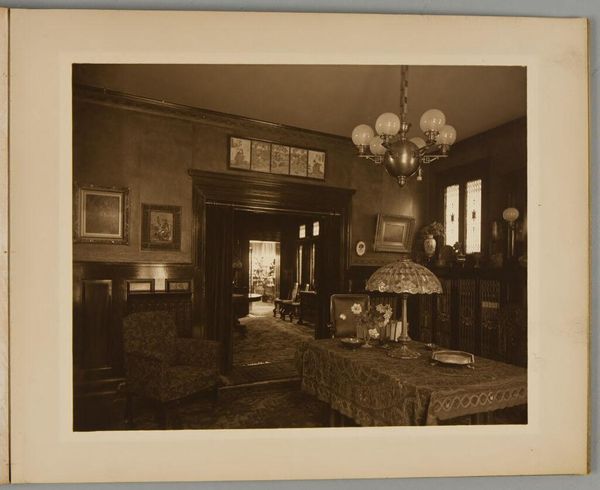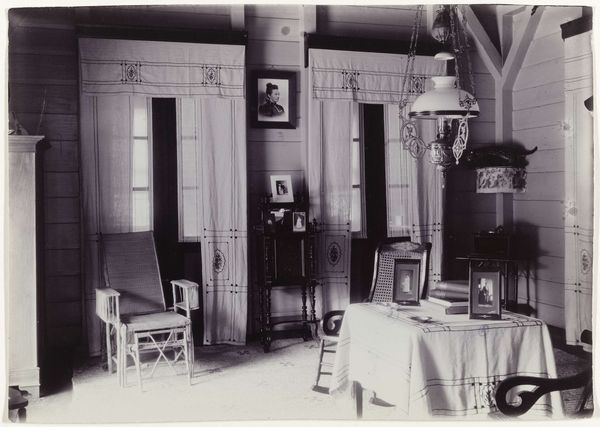
print, photography, gelatin-silver-print
#
still-life-photography
# print
#
photography
#
gelatin-silver-print
Dimensions: height 188 mm, width 245 mm
Copyright: Rijks Museum: Open Domain
Curator: Standing before us, we have “Leeraarskamer,” a gelatin-silver print from around 1902 by Tan Tjie Lan. It presents an image of an empty teacher’s room. Editor: It feels so...sterile, almost staged. The stark black and white emphasizes the geometry of the room - the floor tiles, the rigid lines of the furniture. Everything is very precisely placed; the lack of human presence adds to that coldness. Curator: Indeed. Tan Tjie Lan’s background sheds some light on that staged feeling. As a photographer operating in the Dutch East Indies, now Indonesia, his work was often intertwined with the colonial administration. Photography served administrative purposes and conveyed authority. Editor: So, this image wouldn’t just be a neutral depiction of a teacher’s lounge, but possibly also reflect a specific vision imposed by the Dutch colonial power structures in Indonesia. Thinking about materials, a gelatin-silver print signifies a mechanized process. The reproducibility of this print would further contribute to circulating that specific visual language and those colonial-era values across different societal circles. Curator: Precisely! Furthermore, gelatin-silver printing permitted much finer detail than earlier photographic processes. Look closely and note how all the textures are very clear; consider how a different technology, like a coarser printing method, could affect the meaning or emotional impact. Editor: I do see the difference in textures; for example, how we can distinguish paper sheets on the table from woven chair textures, as well as polished dark wood from matte walls. Looking at the photograph from a social-historical view, what do we know about the function of photography and photographs at that time? How were those photographs seen, and what impact did those have on colonial-era Indonesian communities and governance? Curator: During this era, photography in the Dutch East Indies operated as a tool for cultural control, circulating idealized images reinforcing colonial agendas while often obscuring or misrepresenting realities. It aimed to depict order and refinement and influence perceptions among both colonizers and colonized people. Editor: Considering the original Indonesian name of this photograph "Leeraarskamer," or teachers' room, what type of impact do you think an image of the “teachers’ room” would generate within colonial Indonesian society? Was it accessible, aspirational, exclusive, didactic, and/or something else entirely? Curator: Perhaps, to summarize, “Leeraarskamer" captures a moment that reveals the underlying infrastructure, and colonial politics are embedded not only in subject selection but even down to its medium-specific traits. Editor: That's right; beyond face value, Tan Tjie Lan offers a poignant lens to consider institutional impacts on colonial Indonesia by visually framing order and structure within this context.
Comments
No comments
Be the first to comment and join the conversation on the ultimate creative platform.
